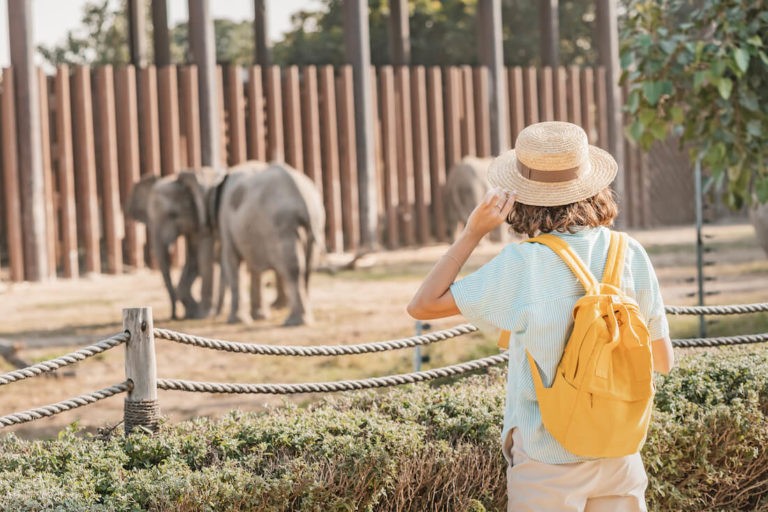Animals enrich our lives in many different ways. When working through the pandemic and the hybrid/virtual learning environment, many teachers got to really know student pets! Many on-camera appearances were made, and it was apparent that animals play a big role in the home lives of many of our students. Incorporating animals into learning is an excellent way to increase student interest levels, but it is not always an easy task. Animals can play a role in not only academic success, but also in social-emotional learning, which is more important now than ever! When learning about animals, it is not necessarily about animals that are pets, but the animals all over the world!
What Subjects Can Use Animals for Learning?
You can use animals in any subject to help support student learning! Using animals for learning can tie many of the subjects together creating cross-curricular learning opportunities. For example, you can be using animals in a Biology lesson, but you can easily extend the learning to ELA, Math, and Social Studies. You can even incorporate animals into character education blocks and into social-emotional learning.
Science lessons are oftentimes involving animals. Even when you are learning about topics such as environment and conservation/pollution, the effects of this on animals can be a topic of discussion. Mathematics story problems can revolve around animals. If you are learning about conversions, you can convert the weight of an elephant from tons to pounds. Social studies can incorporate animals when you talk about various regions of the world and what animals have habitats there and why. ELA can involve animal research and various other writings and readings about animals.
In character education and social-emotional development, animals can be a point of discussion as something that brings comfort to the students. Animals can teach students about sensitivity and how to be caring. This can help students to develop into more well-rounded people.
Ways to Incorporate Animals into Learning
Class Pet
What better way to learn about animals than to have to take care of one! This provides a hands-on, real life experience for the students giving them a sense of responsibility to care for the pet. It provides a social-emotional learning piece as students can see how their actions can directly benefit or hurt another living thing. The pets become a part of the students’ lives, and provide them comfort while showing them how to be more sensitive. Class pets often stimulate learning in all subject areas. It can be a simple ELA question such as, “How would you describe our class hedgehog?”, or by incorporating the pet into math word problems. Another great part about having a class pet is being able to invite other classes in to teach them about how to take care of it and how cool it is to have a class pet!
Field Trip
If you are able to take the students on a field trip, the zoo is a great place to go! This experience gives students the opportunity to see many different animals that they may not encounter otherwise. A great idea to enhance the experience is to make a “Field Trip Scavenger Hunt” for the groups to work on throughout the trip. You can create this by going on the website for the zoo, and looking up the different exhibits and various information on the animals they provide a habitat for. This will give purpose to the trip rather than just having students run around without a purpose. As teachers have become the ultimate pivoters in education, meaning we change things in the blink of an eye, a virtual field trip can also be created if the means are not there to take an actual trip.
Dissections
Another great way to incorporate animals into learning is through dissections. This is not everyone’s cup of tea, but it is a great way to understand animals and their internal structures. This is a hands-on approach to understanding how complex animals are which can directly relate to how complex humans are. Dissections provide learning opportunities and practice with fine motor skills and hand-eye coordination. Dissections can also grab the attention of students and put them on the path of a career in Science.
Projects
A project including animals is a fun way to learn about them! One teacher that I work with does an amazing Amazon Rainforest Project with the students each year. The students create a three-dimensional model of the Amazon animal of their choice along with a five-paragraph essay that includes research about the animal. There are so many different ways to complete a project such as this. You can give digital options for students at higher grade levels that are interested in animation and computer design. You can adjust the writing piece for different grade levels. For younger students, you can require a paragraph, and for older students, you can require a research paper.
Show and Tell
For many elementary students, a show and tell with pets creates a lot of excitement! There are so many ways to complete this without having to bring the pet into the classroom. Photographs in a Google Slideshow, a YouTube Video, and actual pictures coming into school are just some ways that pets can get shown off! If students have cell phones, you could even make a special “Pet Facetime” where students could Facetime someone at home and show off their pet.
The Wrap-Up
Animals can help to support and enhance learning in many different ways. As we know, learning is not always academic, and animals can provide an important social-emotional component. Incorporating animals into learning can provide academic opportunities for students in all subject areas. As Anthony Douglas Williams stated, “We have more to learn from animals than animals have to learn from us.” Animals are out there, we just need to decide how to best incorporate them into our classrooms to help promote student achievement and academic success!




